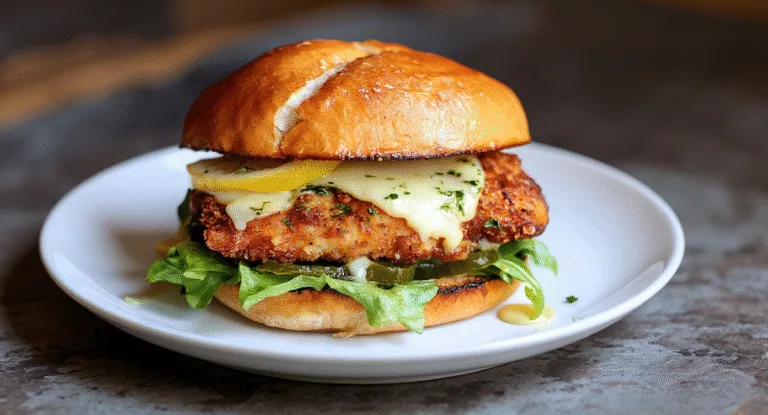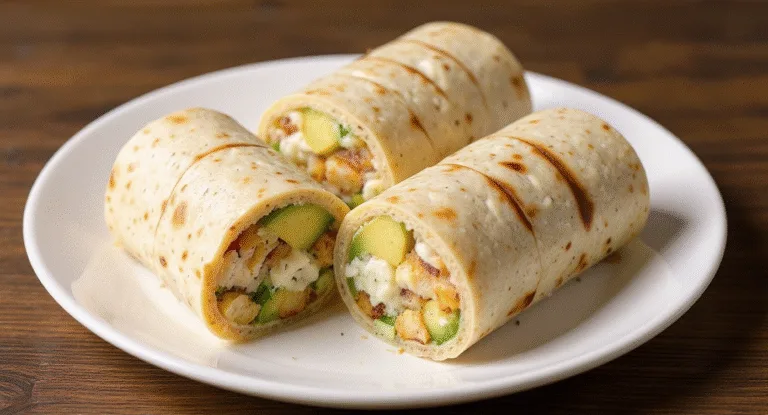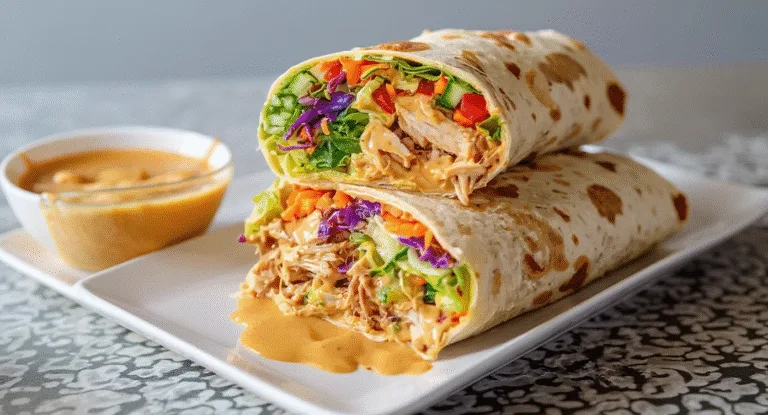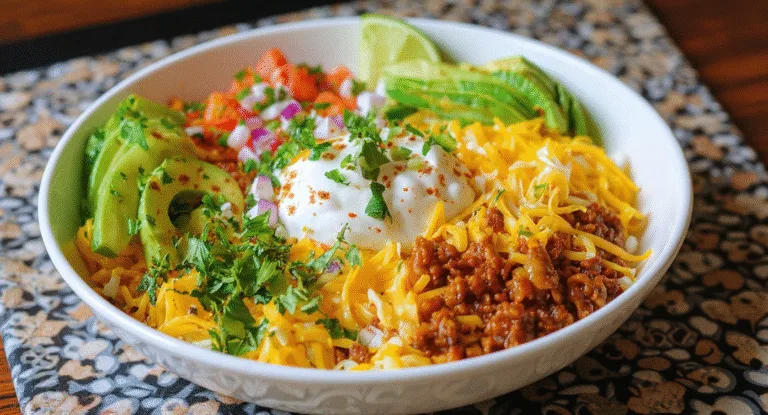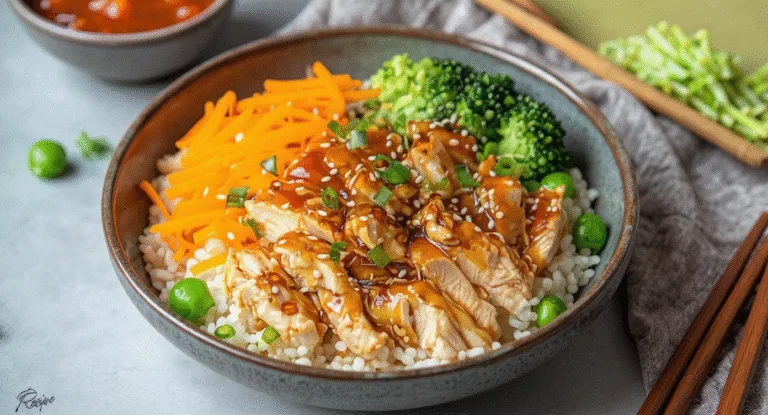A Delightful & Simple Baked Dolphin Fish Recipe: Your Complete Guide
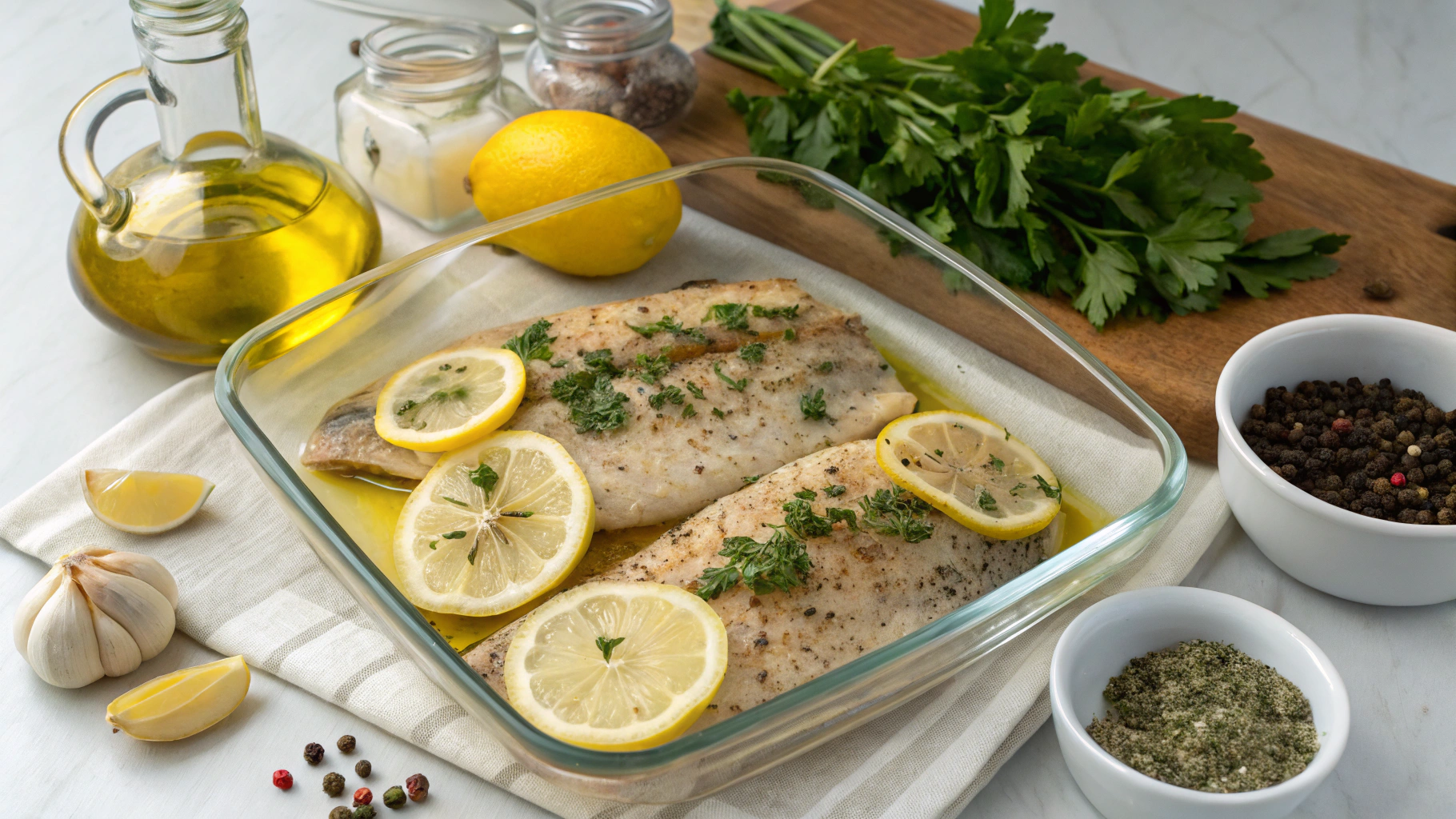
Have you ever been perplexed by your fridge contents, wishing for a meal that’s both wonderfully appetizing and notably nourishing, without requiring an age in the kitchen? Maybe you’re seeking a fresh approach to fish that will have everyone clamouring for more? Well, we’re absolutely delighted to unveil a culinary treasure today: our uncomplicated yet truly remarkable baked dolphin fish recipe! This dish is a genuine star, turning lovely mahi-mahi fillets into a tender, flavour-packed focal point for any dining occasion.
Understanding Dolphin Fish: More Than Just a Name
Right then, before we explore the mouth-watering specifics, it’s vital we clarify a key point. When we mention “dolphin fish,” we are most certainly not speaking of the clever marine mammal, the dolphin! Such a thought wouldn’t bear considering. The “dolphin fish” we prepare is far more widely recognised globally as mahi-mahi. This is a striking, surface-living fish inhabiting tropical and subtropical seas. The term “dolphin fish” arose from its tendency to swim before sailing vessels, much like dolphins do, and its Spanish name, “dorado,” translates to “golden,” alluding to its splendid hues. So, please be assured, we’re preparing a scrumptious and responsibly sourced fish, quite distinct from any porpoise pals!
Why We Love This Baked Dolphin Fish Recipe
With numerous methods available for cooking fish, you may ask why we’ve settled on baking for our dolphin fish. We find it offers several superb advantages:
- A More Wholesome Choice: Baking uses considerably less oil than techniques like frying, yielding a lighter, more nourishing dish that doesn’t skimp on taste.
- Wonderfully Uncomplicated: This recipe is refreshingly simple. Requiring little preparation and mostly unattended cooking, it’s ideal for those hectic weekday evenings.
- Superb Flavour Development: Baking enables the mahi-mahi to cook gently, bathed in its natural moisture and the aromas of any herbs and spices we introduce. This creates an exceptionally succulent and tasty fillet.
- Reliable Outcomes: Achieving perfectly done fish is often more straightforward in the oven, helping us sidestep the usual issues of it being either overdone or underdone.
We feel this approach genuinely allows the inherent, delicate sweetness of the mahi-mahi to take centre stage.
Getting Ready: What You’ll Need
To begin this delightful baked dolphin fish journey, we’ll first need to collect our principal ingredient alongside some fundamental kitchen equipment.
Sourcing the Star: Your Mahi-Mahi Fillet
The standard of your fish is absolutely key. When selecting your mahi-mahi fillet, we recommend considering the following:
- Prioritise Freshness: If purchasing fresh, seek out fillets that feel firm, exhibit a somewhat transparent, pinkish colour, and carry a gentle scent of the sea. Steer clear of any pieces that appear lacklustre, have a slimy texture, or emit a pronounced fishy smell.
- Frozen Is a Good Option: High-quality frozen mahi-mahi fillets serve as a splendid substitute and are frequently easier to find. Opt for vacuum-packed portions, as these better preserve freshness. Ensure they are fully defrosted in the fridge prior to cooking, never on the worktop.
- Consider the Thickness: Try to select fillets approximately 1 to 1.5 inches (2.5 to 3.8 cm) thick. This density helps them retain moisture whilst baking.
- Think Sustainably: We consistently advocate for selecting seafood from sustainable fisheries. Check for eco-labels or inquire with your fishmonger about the fish’s provenance. For further details on making responsible seafood selections, you can consult reputable bodies such as the Marine Stewardship Council (MSC).
Essential Kitchen Kit
It’s probable you possess most of this gear already. We shall require:
- An oven (warmed up in advance, naturally!)
- A baking tray or dish (glass, ceramic, or metal) spacious enough for the fillets to sit comfortably without being squashed.
- Baking parchment (not essential, but brilliant for a simpler tidy-up).
- A food thermometer (strongly advised for achieving flawless results).
- Measuring spoons and cups.
- A little bowl for combining the seasonings.
The Perfect Baked Dolphin Fish Recipe: Ingredients
Our recipe champions straightforward ingredients chosen to elevate the mahi-mahi’s natural taste rather than mask it. Please do feel at liberty to alter the seasonings according to your own palate!
- Mahi-Mahi Fillets: 2 (around 170-200g or 6-7 oz each), skinless
- Olive Oil: 2 tablespoons, extra virgin
- Lemon: 1, half juiced, half sliced into rounds
- Minced garlic: 2 cloves
- Dried oregano: 1 teaspoon.
- Dried basil: 1 teaspoon (or 1 tablespoon of fresh, chopped basil)
- Salt: ½ teaspoon, or adjust to taste.
- Black Pepper: 1/4 teaspoon, freshly ground, or to taste
- Chopped fresh parsley: 1 tablespoon (optional, for garnish).
- Paprika: 1/2 teaspoon (optional, for colour and mild flavour)
Let’s Get Cooking: Step-by-Step How to Cook Mahi in the Oven
And now for the exciting bit! Adhere to these easy stages for impeccably baked dolphin fish.
- Warm Up Your Oven: Start by preheating your oven to 200°C (400°F, Gas Mark 6). Should you be using a glass baking dish, some suggest a slightly cooler temperature, perhaps 190°C (375°F), to avert any potential cracking due to temperature shifts, although contemporary glass dishes are generally robust.
- Get the Fish Ready: Carefully pat the mahi-mahi fillets dry using kitchen paper. This aids in the adherence of seasonings and encourages a delicate, light browning.
- Combine the Flavourings: In a small basin, merge the olive oil, lemon juice, minced garlic, oregano, basil, salt, pepper, and paprika (if you’ve chosen to include it). Whisk everything together thoroughly.
- Dress the Fillets: Position the mahi-mahi fillets in your baking dish (which you can line with baking parchment for simpler washing up, if desired). Distribute the olive oil mixture evenly over the fillets, making sure they receive a good coating. A pastry brush or your fingertips work well for this.
- Introduce Lemon Rounds: Lay the lemon slices atop or alongside the fish fillets within the baking dish. This not only presents beautifully but also imparts an additional citrus fragrance during baking.
- Bake Until Just Right: Transfer the baking dish to your preheated oven. Bake for approximately 12-18 minutes. The precise duration will vary based on your fillets’ thickness. Mahi-mahi cooks fairly swiftly, and our aim is to prevent it from becoming dry.
The Crucial Check: Mahi Mahi Internal Temp
The most reliable method to guarantee your dolphin fish is cooked to perfection – succulent, flaky, and entirely safe to consume – involves checking its core temperature. We cannot emphasise this sufficiently! Overdone fish becomes dry and lacklustre. Insert a food thermometer into the densest section of the fillet. We are targeting a mahi mahi internal temp of 63°C (145°F). As soon as it attains this temperature, take it out of the oven straight away. The fish will carry on cooking a little from the retained heat after removal.
Watch and Learn: Baking Mahi-Mahi Made Easy
Occasionally, a visual demonstration is invaluable! We’ve discovered an excellent, easy-to-follow video that guides you through a comparable baked mahi-mahi method. It serves as a splendid visual aid to accompany our written steps.
Serving Your Masterpiece
When your baked dolphin fish is cooked, allow it to sit for a few minutes prior to serving. This brief pause lets the juices settle, yielding a more tender result. Adorn with freshly chopped parsley if you fancy. We particularly enjoy accompanying our baked mahi-mahi with:
- Roasted vegetables (such as asparagus, bell peppers, or courgettes)
- Steamed green beans or broccoli florets
- A crisp garden salad dressed with a delicate vinaigrette
- Fluffy quinoa, couscous, or perfectly cooked rice
- Smooth mashed potatoes or tender baby new potatoes
And for an uncomplicated, comforting pudding to round off this splendid meal, may we suggest our timeless Banana Bread? It’s a firm favourite with everyone in the family!
Twists and Turns: Recipe Variations
Although our traditional recipe is a triumph, please don’t be reluctant to explore variations once you feel confident!
Spice It Up!
Mahi-mahi is remarkably adaptable and pairs beautifully with a diverse range of flavour combinations. You might like to try these alternatives:
- A Cajun Flair: Exchange the herbs for a top-notch Cajun spice mix. Tailor the quantity to suit your desired level of heat.
- Sumptuous Garlic Butter: Gently melt a couple of tablespoons of butter with finely chopped garlic and a dash of lemon juice. Drizzle this over the fish prior to baking.
- Mediterranean Notes: Introduce chopped olives, capers, and sun-drenched tomatoes to the baking dish with the fish. A scattering of feta cheese post-baking can also be quite tasty.
- An Eastern Influence: Experiment with a marinade composed of soy sauce, fresh ginger, garlic, and a hint of honey.
Beyond Baking: Other Ways to Enjoy Mahi-Mahi
Whilst we champion our baked dolphin fish recipe for its simplicity and health advantages, mahi-mahi is also superb when cooked using alternative techniques. For example, pan seared mahi mahi yields a delightfully crisp exterior whilst the inside remains moist – this method is faster but demands closer supervision. It’s also possible to achieve a wonderful sear on the hob and then transfer it to the oven to finish cooking. Some people also favour fried mahi mahi, typically for fish tacos or a fish and chip supper, which provides a crunchy coating but is a less wholesome choice. Every approach has its own appeal, but for a reliably tasty, nourishing, and straightforward meal, we invariably return to baking.
Top Tips for Flawless Baked Dolphin Fish Every Time
Our aim is for you to achieve perfect results on every occasion! Here are some additional handy hints:
- Avoid Overloading the Dish: Ensure your fillets have adequate room in the baking dish. Too many pieces close together can lead to them steaming instead of baking, which impacts the final texture.
- Adapt for Fillet Density: Slender fillets will cook more rapidly, whereas thicker ones will require more time. Monitor them closely and don’t forget that thermometer!
- Ensure It’s Dry: We’ve noted this previously, but it bears repeating. Eliminating surplus moisture aids seasoning adherence and contributes to a better overall texture.
- Think About a Brief Marinade: Soaking the fish in the lemon-oil blend for even 15-30 minutes before it goes into the oven can intensify the flavours.
- Allow to Rest Before Serving: Similar to meat, fish profits from a brief resting period (2-3 minutes) once cooked. Cover it loosely with foil.
- Embrace Frozen Fish: As previously stated, good-quality frozen mahi-mahi is an excellent choice. Simply make certain it’s completely defrosted in the refrigerator – never on the work surface or in the microwave – to maintain the best possible texture.
The Goodness Within: Nutritional Value of Mahi-Mahi
Aside from its wonderful flavour, mahi-mahi is a veritable treasure trove of nutrients. It serves as a superb source of lean protein, essential for constructing and mending bodily tissues, and for helping us feel satiated and content. It’s also abundant in B vitamins (particularly B12, B6, and niacin), which are indispensable for energy release and the healthy functioning of our nervous system.
Moreover, mahi-mahi supplies selenium, a significant antioxidant, along with potassium. Although not as concentrated in omega-3 fatty acids as some oil-rich fish like salmon, it nonetheless provides a respectable quantity of these beneficial fats for heart health. It represents a splendid option for a well-rounded and nourishing diet. If you’re keen on wholesome eating, you may also appreciate our Sugar-Free Banana Bread for a delightful, guilt-free treat following your main course.
Your Questions Answered: FAQ about Baked Dolphin Fish
We’ve compiled a few frequently asked questions to assist you on your cooking adventure.
Is “dolphin fish” the same as the mammal dolphin?
Emphatically no! This is an extremely crucial point of differentiation. The dolphin fish, also referred to as mahi-mahi or dorado, is a type of fish. It bears no relation whatsoever to the marine mammal, the dolphin. When we discuss a “baked dolphin fish recipe,” we are exclusively referring to the preparation of this particular fish.
What’s the ideal internal temperature for cooked mahi-mahi?
The perfect core temperature for cooked mahi-mahi is 63°C (145°F). Employ a food thermometer, inserted into the most substantial part of the fillet, to confirm it is thoroughly cooked yet remains succulent and flaky.
Can I use frozen mahi-mahi fillets for this baked dolphin fish recipe?
Yes, most certainly! Frozen mahi-mahi fillets are perfectly suitable and perform admirably. Simply ensure they are completely defrosted in the refrigerator before you commence cooking. Pat them dry with kitchen paper to eliminate any surplus moisture from the thawing process.
How should I store leftover baked mahi-mahi?
Should you find yourselves with any leftovers (though we suspect it’s unlikely!), permit the baked mahi-mahi to cool down entirely. Store it in an airtight container in the refrigerator for up to 2-3 days. It can be enjoyed cold, perhaps in a salad, or carefully reheated in the oven or microwave – take care not to overdo it during reheating.
What are some delicious side dishes for baked dolphin fish?
Baked dolphin fish complements a broad variety of accompaniments splendidly. A few of our preferred pairings are roasted asparagus, steamed green beans, a vibrant quinoa salad, a light rice pilau, creamy garlic mashed potatoes, or an unadorned side salad with a zesty lemon vinaigrette. Select options that enhance the delicate, fresh taste of the fish.
My baked fish turned out dry. What went wrong?
The usual culprit for dry baked fish is that it has been cooked for too long. Mahi-mahi is a lean type of fish and cooks quite rapidly. Even an extra minute or two in the oven can result in dryness. This underscores why employing a food thermometer to verify that ideal 63°C (145°F) core temperature is so very important. Additionally, check that your fillets are not overly thin, as these will cook through much more quickly.
Ready to Bake? Your Delicious Dolphin Fish Awaits!
We trust this guide has sparked your enthusiasm and demonstrated just how straightforward it is to prepare an exceptionally tasty and wholesome meal using our baked dolphin fish recipe. It’s a dish refined enough for entertaining, yet uncomplicated enough for a midweek supper. The blend of tender, flaky fish with zesty lemon and fragrant herbs is a genuine treat for the palate.
So, we warmly invite you to try this recipe in the coming week. We feel sure you’ll be delighted with the outcome. Remember to gather your ingredients, switch on that oven, and prepare to savour a wonderful seafood meal. Do let us know how you get on in the comments section – we always enjoy hearing about your culinary exploits!

